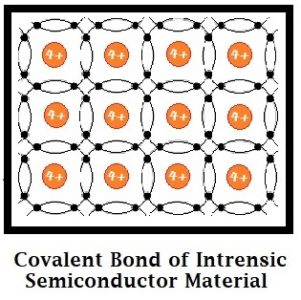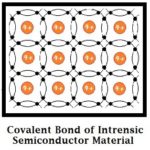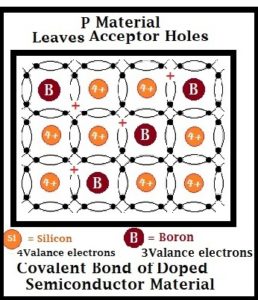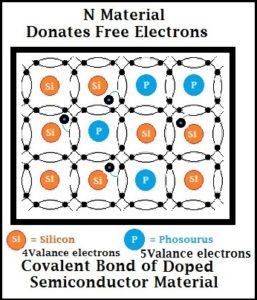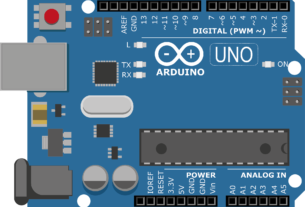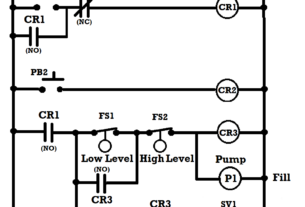Semiconductor Elements
The primary materials used in the forming of transistors are classed as Semiconductors. The materials in this category include Silicon, and Germanium. What makes semiconductor atoms unique is that they have four valence (outer shell) electrons. Conductor atoms have less than four and insulator atoms have more than four. The maximum number of valence electrons in a natural atom is eight.
In pure Silicon or Germanium each and every atom would have four electrons in its valence shell. But, generally speaking pure (intrinsic) semiconductor material doesn’t exist when grown in earth’s atmosphere. Therefore, there are always some impurity atoms with more or less than four valence electrons within the material.
Donors and Acceptors
As you may already know, Electrons are considered to have a negative charge. So, in a material made up of semiconductor atoms, any atoms with five valence electrons would be “donating” an extra electron (negative charge) to the structure. These impurity atoms are referred to as donors. On the other side of the coin, any atoms within the semiconductor material that have only three valence electrons leaves a hole (positive charge) in the structure. These impurity atoms are referred to as Acceptors.
Polarity
Generally speaking, the extra positive and negative impurities balance out so the semiconductor material structure is neutral. Current flow can be electrons in motion. Electrons move from a negative potential toward a positive potential. The electrons are negative charge carriers. Looking at this another way, as the electrons move through a conductor (from atom to atom) each move leaves a hole. As the electrons move it leaves the illusion that holes are moving from positive to negative (conventional current). The holes are positive charge carriers.
Doping to produce P and N materials
By adding an impurity to the semiconductor (doping) you can turn it into a conductor. If atoms with five valance electrons (pentavalent) are added, negative charge carriers are introduced (N material). If atoms with three valance electrons (trivalent) are added, positive charge carriers are introduced (P material).
Doping Elements
The pentavalent elements include Gallium and Arsenic to create P material. The trivalent elements include boron (B) or aluminum (Al).

